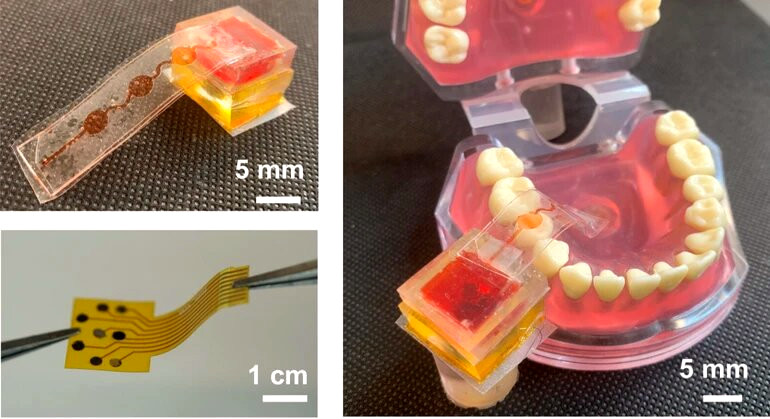Have you ever dreamed of tasting exquisite dishes seen in online photos? We have great news for you.
A team of researchers has invented a device that can transmit the flavors of food and drinks remotely and share them instantly.
This information was published in a scientific article in the journal Science Advances, reported by The Guardian.
The device, created by American scientists, is called e-Taste. It consists of two primary components:
- "electronic tongue" – it detects the concentration of five different flavor chemicals in a liquid sample and transmits this information wirelessly;
- a device that uses small electromagnetic pumps to push liquids through a gel layer containing five edible flavor chemicals, delivering them into the mouth.
The flavor chemicals can be mixed before serving. They correspond to those found in the original product:
- glucose – sweet flavor;
- citric acid – sour;
- sodium chloride (salt) – salty;
- magnesium chloride – bitter;
- glutamate – umami.
The system can also deliver flavorings to specific areas of the tongue. According to the researchers, this could potentially be used to study taste perception.
The team conducted a series of tests with their system. In one, ten volunteers were asked to determine varying levels of acidity in generated liquids. Participants were able to do this with an accuracy of 70%.
In another experiment, six volunteers tried different combinations of flavored liquids developed to represent five different dishes and drinks: lemonade, cake, eggs, coffee, and fish soup.
Then, the participants tasted the liquid generated by the system. They matched flavors and products with an accuracy of nearly 87%.
Scientists say that e-Taste could be useful for enhancing virtual and augmented reality systems by increasing immersion. It could also potentially be used for biomedical research or even "virtual culinary adventures".
However, the team notes that the system requires further development. They have not yet managed to fully replicate the sharpness and fattiness of tastes.
As a reminder, researchers have also developed a bionic leg prosthesis that is controlled by signals from the brain.
